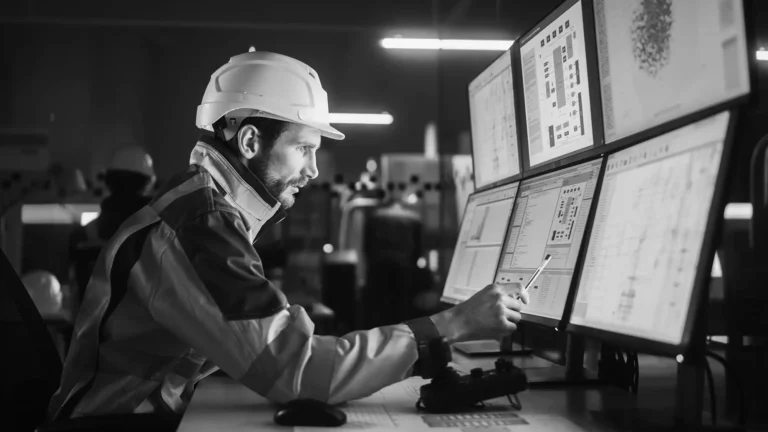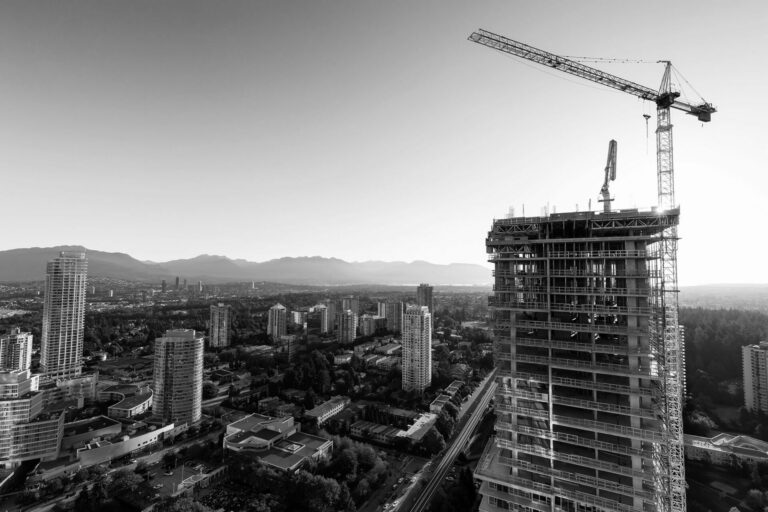Twelve months is a long time in business. Start-ups can flourish and thrive to become major players in the industry, while external market forces can bring companies to their knees. The prospect of anticipating the ebbs and flows of the construction industry over such a length of time is an onerous one. Many attempt to make these predictions only to see the market dip or soar unexpectedly. Midway through 2023, the construction industry was in a bit of a slump. While it wasn’t completely out, many were predicted that it was on its way down. Supply chain issues coupled with other spirally costs and a threadbare workforce meant that pessimism was in large supply. Alongside that, interest rates were soaring and projects were being hit with multiple delays.
At the time, predictions varied but most were struggling to find many positives. The U.S. Construction Market Size and Trend Analysis report shared findings that the industry was to follow up a contraction of 8.2% in 2022 with a further decline of 2.5%. This led to an outlook that was, at best, cautious. Similarly, the Construction Financial Management Association (CFMA) ended the year with an index of 96, which constitutes a pessimistic outlook. The infrastructure bill was offering a sliver of light but even that was coming under fire in some quarters with questions being raised about the equity of opportunities for companies on both sides of the union divide.
However, 2024 has turned out to be considerably brighter than anyone could have anticipated. In March, for instance, the index at the CFMA was a much more optimistic 109. Many across the industry are pointing to a number of factors for this upturn. Material costs seem to finally have stabilized and a surge of infrastructure opportunities is being experienced across the board. Alongside this, federal legislation passed in recent years seems to finally be having a positive effect on inflation which, in turn, will boost the likelihood of interest rate decreases. For the CFMA, things are moving in the right direction. “At the end of last year, the stock market rallied while credit conditions eased, rendering it more likely that projects that had been postponed in 2023 will come to fruition in 2024. CFOs are also likely looking forward to lower interest rates. Coming into the year, the Federal Reserve was expected to reduce interest rates several times. While those expectations have been trimmed in light of recent inflation data, the notion remains that the Federal Reserve’s next move will be to cut rates, rendering project financing a bit easier or at least less expensive.”
“Material costs seem to finally have stabilized and a surge of infrastructure opportunities is being experienced across the board. Alongside this, federal legislation passed in recent years seems to finally be having a positive effect on inflation which, in turn, will boost the likelihood of interest rate decreases.”
The Infrastructure and Jobs Act (IIJA) has had a hugely important impact on the construction and employment sectors. In a recent update, the White House reported that in the last three years, 670,000 jobs were created in construction. While the workforce outlook is still not ideal, this boost has led to a surge in heavy and civil engineering and construction of buildings. In fact, growth in these sectors has surpassed pre-Covid levels. Again, the CFMA feels that this has helped enormously. “Another factor at work is evidence that infrastructure work is picking up. President Biden signed the Infrastructure and Investment and Jobs Act on November 15, 2021. It required approximately two years to position many projects to break ground, but recent construction spending data indicate that more public work has begun, another reason for expanding CFO confidence. Accordingly, the Current Confidence Index expanded 7.3% during 2024’s initial quarter to a reading of 103.”

IIJA is not the only piece of legislation to have positively impacted the construction industry, however. In August 2022, the Bipartisan CHIPS and Science Act was signed into law. CHIPS (creating helpful incentives to produce semiconductors) was designed to lure microchip manufacturing back to the United States. The need for this act was simple. In 1990, 40 percent of the world’s semiconductor supply was manufactured in the U.S. That figure now stands at 12 percent. $53 billion in federal incentives was provided for domestic semiconductor manufacturing and research and development. These incentives have pushed the manufacturing sector into overdrive. The White House reported that, off the back of the CHIPS act, $866 billion has been invested by private investors.
This is a view that has been echoed by Jay Timmons, CEO of the National Association of Manufacturers (NAM). “Every manufacturer in America will benefit from the CHIPS and Science Act, whether they make chips, make products that require chips, or are part of a supply chain disrupted by the semiconductor shortage. Our economic future and America’s leadership in the world depend on a competitive manufacturing industry. Congress has acted wisely with the CHIPS and Science Act. Now we need Congress to continue standing with manufacturers and focus on policies that will help us compete with China and other countries, not make it more expensive to make things in America.”
Twelve months in business is a long, long time. As recent months have shown, the construction industry is cresting a wave in many respects. Its resurgence across a number of sectors is expected to continue as federal initiatives and funding give the industry the boost it so badly needed last year. With backlogs increases signifying a busier calendar, it seems as though the main challenge facing the industry once more is labor shortages. In fact, the CFMA notes that the current viewpoint is that next year is set to be even busier than this one. “Backlog expectations are consistent with renewed optimism. Fully 37% of contractors indicate that backlog is higher than it was a year ago, though it is conceivable that that figure also reflects what has been a rising tide of postponed projects. Tellingly, 38% of contractors expect backlog to be higher a year from now, up from 23% during the fourth quarter of 2023. Perhaps the most interesting piece of data relates to the Year-Ahead Outlook Index. That index is up 21% on a quarterly basis and 16% on an annual basis. In other words, contractors expect to be even busier a year from now; an expectation that perhaps reflects collective anticipation regarding lower interest rates and project financing costs.”




















